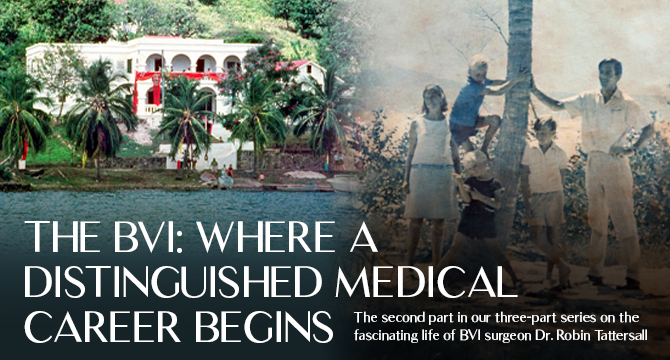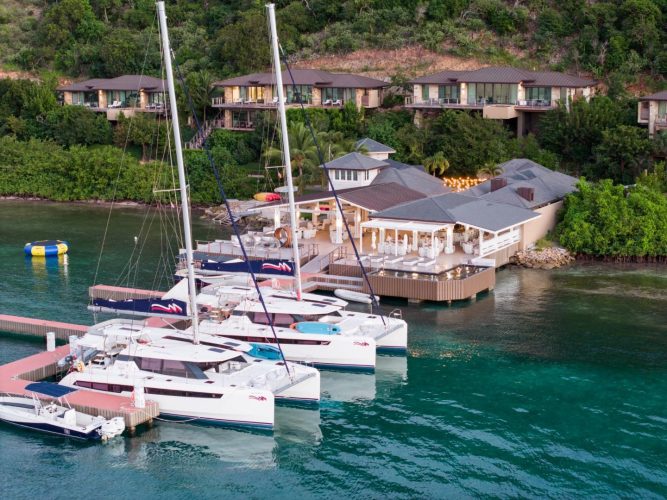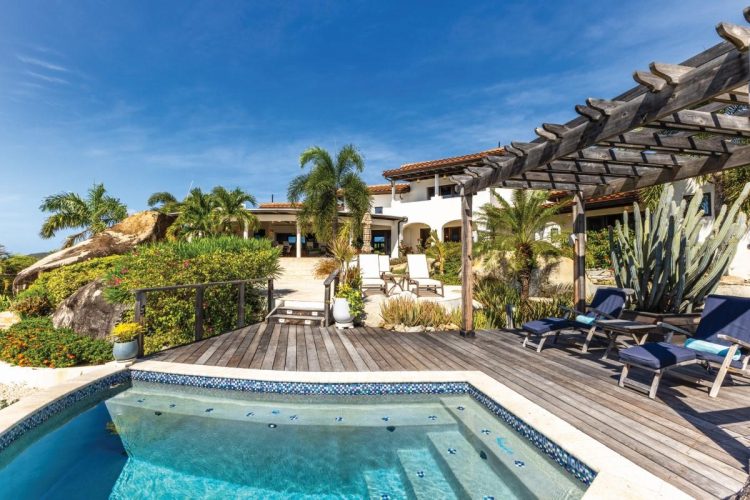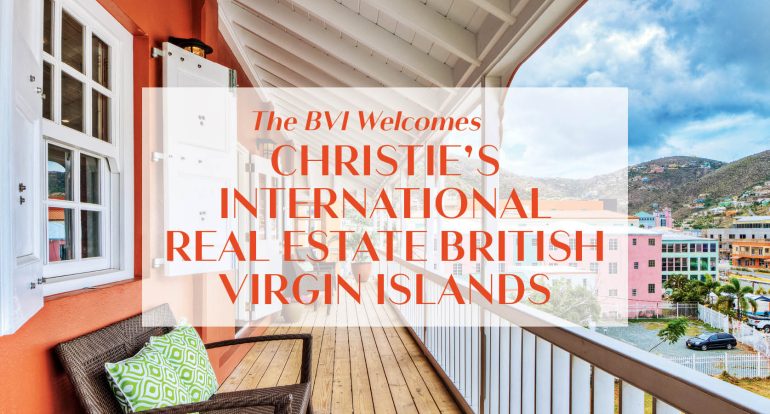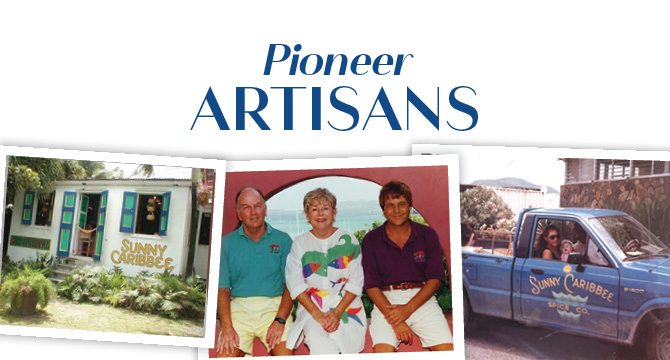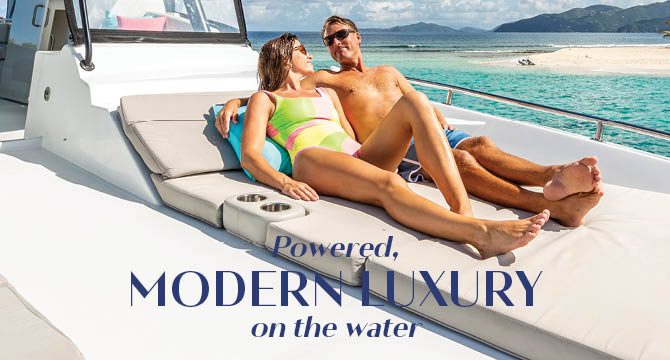After returning home to England with his modelling career behind him, and completing his surgical training over the next four years, Robin was encouraged by the British Medical Association to spend a couple of years in a developing country before finally settling down back home in England.
He had always wanted to be a general practitioner (GP) surgeon in the traditional sense: the kind of doctor that did everything. However, this type of practice was dying out at that time in the United Kingdom.
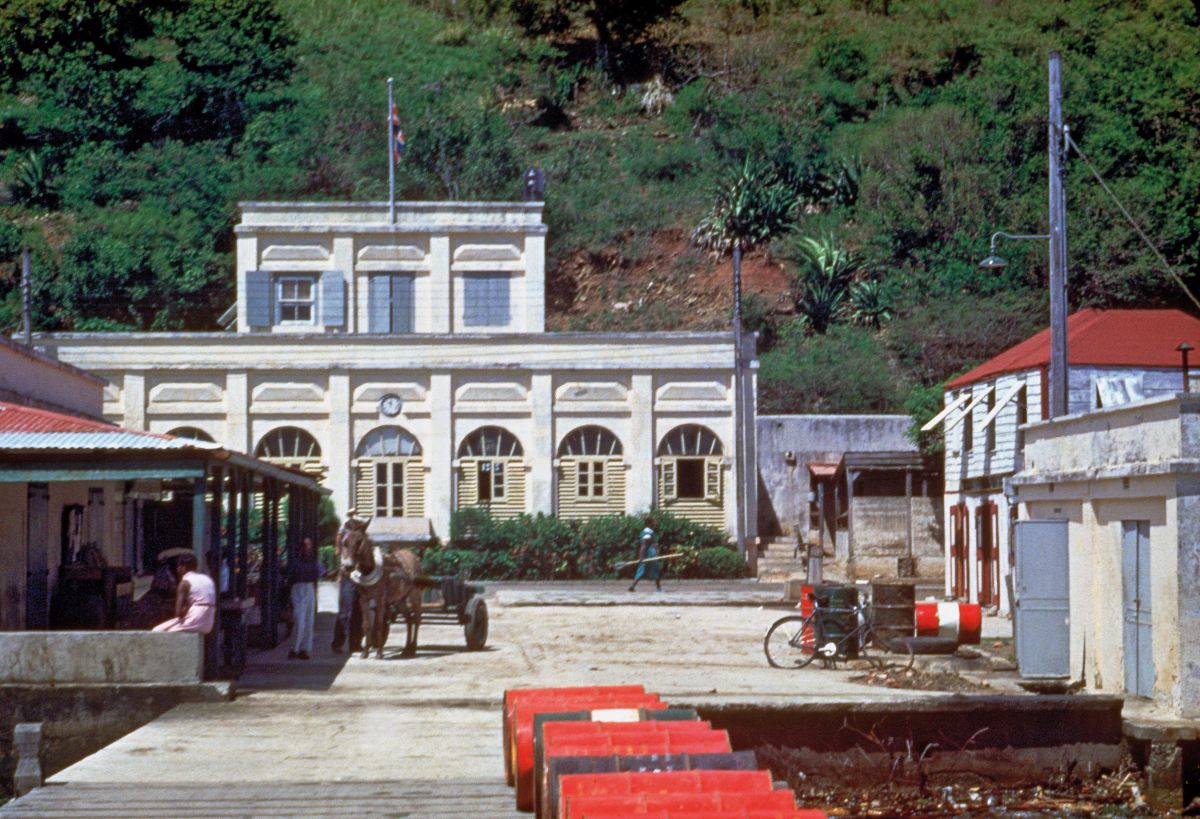
Haycraft – Virgin Islands
Robin had always been passionately fond of small islands, so when he and his wife Jill researched possible places where British doctors were welcome, several considerations came into play. They had three small children who needed to be educated in England. Therefore, that ruled out such places as the Pacific islands, as they were too far away.
Robin had good memories of the time he sailed with a friend from Nassau to Jamaica between Christmas and New Year’s of 1960-61, during a break from modelling in New York. He found it difficult to believe he could sail in midwinter wearing just a pair of shorts and maybe a shirt, as back in England, the sailing was limited to one or two months per year. So he decided it would be much more fun to go somewhere he could sail all year round.
When looking more deeply at the Caribbean, the British Virgin Islands fitted the bill — it wasn’t so large that it would require more than one surgeon (the population at the time was slightly less than 10,000). That way he wouldn’t have someone looking over his shoulder saying “that’s not your job.”
In the spring of 1965, Robin enquired about opportunities with the Ministry for Overseas Development, but there was only one opening available and that was on South Caicos in the Turks and Caicos Islands.
At an interview with the top official at the foreign office in Whitehall, he learned that at that time, Turks and Caicos was not a place suitable for young children, and in South Caicos there were minimal facilities for surgical practice.
Robin was deeply disappointed. However, as he was leaving the office, he noticed a set of nautical charts of all the UK colonies on the rear wall, including the BVI. Pointing to them, he said, “That’s really where I would like to go.”
The official asked, “Why?”
Whereupon Robin told him all the information he and Jill had learned through their detailed research. The surprised official commented, “You seem to know more about the islands than I do, and I’m supposed to be running them.” Robin kept his thoughts to himself, but he did wonder if that’s why the British lost the Empire. At that point, the official mentioned they had received a request for a surgeon in the BVI, but before he had a chance to continue, Robin interjected: “Great! I’m all ready to go!” The official went on to say, “That was 18 months ago.” Robin’s hopes were dashed. However, the man continued: “But I don’t think we have filled it yet.” Robin says: “In those days, one had to go out by sea. On the way, the ship had put into Lisbon, where the newly appointed surgeon eloped with the captain’s wife and was never seen again.” Apparently they had not re-advertised, so Robin got the job, perhaps, as he wryly recalls, because there were no further applicants!
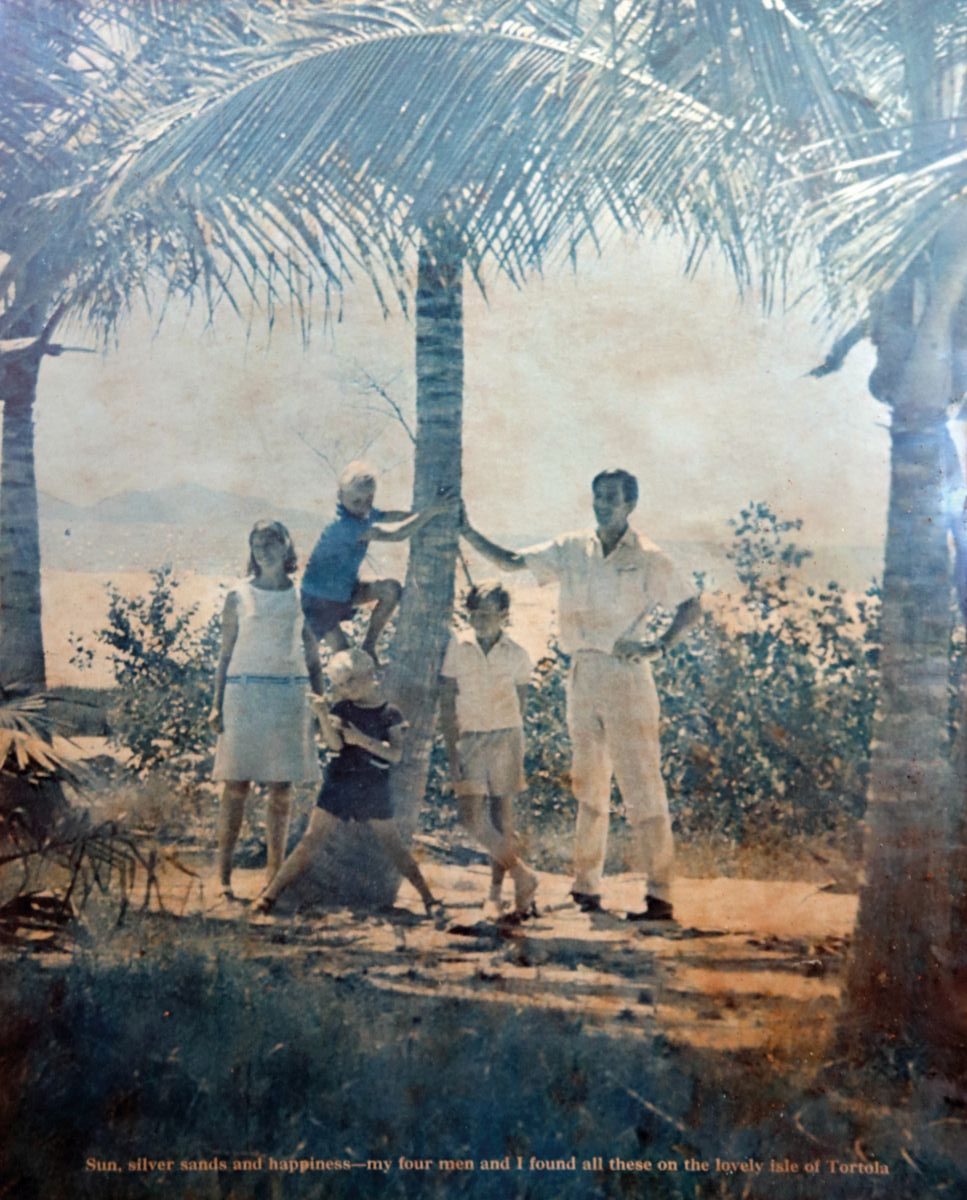
A sloop called Summer’s Cloud
Robin had visited the Earl’s Court Boat Show in January 1965, with, at that time, absolutely no idea about his family’s overseas future. He had ordered a small 28-foot sloop, which was not due to be completed until August of that year. The deposit for the boat came from the advance that Jill had received for her first novel, A Summer’s Cloud, in honour of which they named the boat.
The Crown agent instructed Geest Shipping Company to transport Robin and his family to Saint Lucia, from whence they planned to sail to the BVI. Just one shipping tonne of luggage was allowed. Robin advised the agent they had a boat to bring. When the agent estimated its size, he told Robin that it would cost £400, which was definitely more than they could afford. But after consideration, the agent kindly said, “We can just call it accompanied baggage … would £100 be okay?”
Sailing up the island chain
In August 1965, Robin, Jill, their three young sons, plus Peter the cat, boarded the Geest banana boat Brunsland, with accommodation for 12 passengers, setting out from Barry Docks a few miles southwest of Cardiff, with Summer’s Cloud stowed safely aboard on the aft deck.
As the ship was going out light, the single large propeller was partly out of the water, and when Robin went to check on her once she was up to full speed, he was horrified to find that the aft deck and Summer’s Cloud were both vibrating wildly. This gave a whole new meaning to the phrase “shakedown cruise,” as during the 10-day passage, various suspect pieces of the interior joinery came apart. As a result, Robin spent most of the passage aboard Summer’s Cloud helping the ship’s carpenter repair all the offending pieces. Robin jokingly likes to say that it gave him the right to say he has crossed the Atlantic in his own boat!
Brunsland first stopped at Grenada and then SaintVincent, where they had the exciting experience of watching the island’s womenfolk walking up the gangplank carrying large hands of bananas on their heads, all the time singing the Harry Belafonte song ”Day-O:” “Day-O, day-o, daylight come a me wan’ go home.”
Robin and his family eventually disembarked at Saint Lucia, where they spent the first week rigging and tuningSummer’s Cloud to perfection, before their voyage to the BVI.
When the Tattersalls arrived in Saint Lucia, it was the hottest day on record for many years, and so the boys spent much of their time using the bellows of the inflatable dinghy to blow air over blocks of ice to cool down the poor cat.
They began their cruise when they were confident that everything was well with their sloop, and followed the island chain on their voyage to Tortola, stopping at almost every inhabited island along the way.
After a very rough passage from Guadeloupe to Antigua, during which the mainsheet attachment to the boom broke off when the family was halfway across, with much relief, they found the entrance to the tranquillity of English Harbour, about halfway through their journey to the BVI.
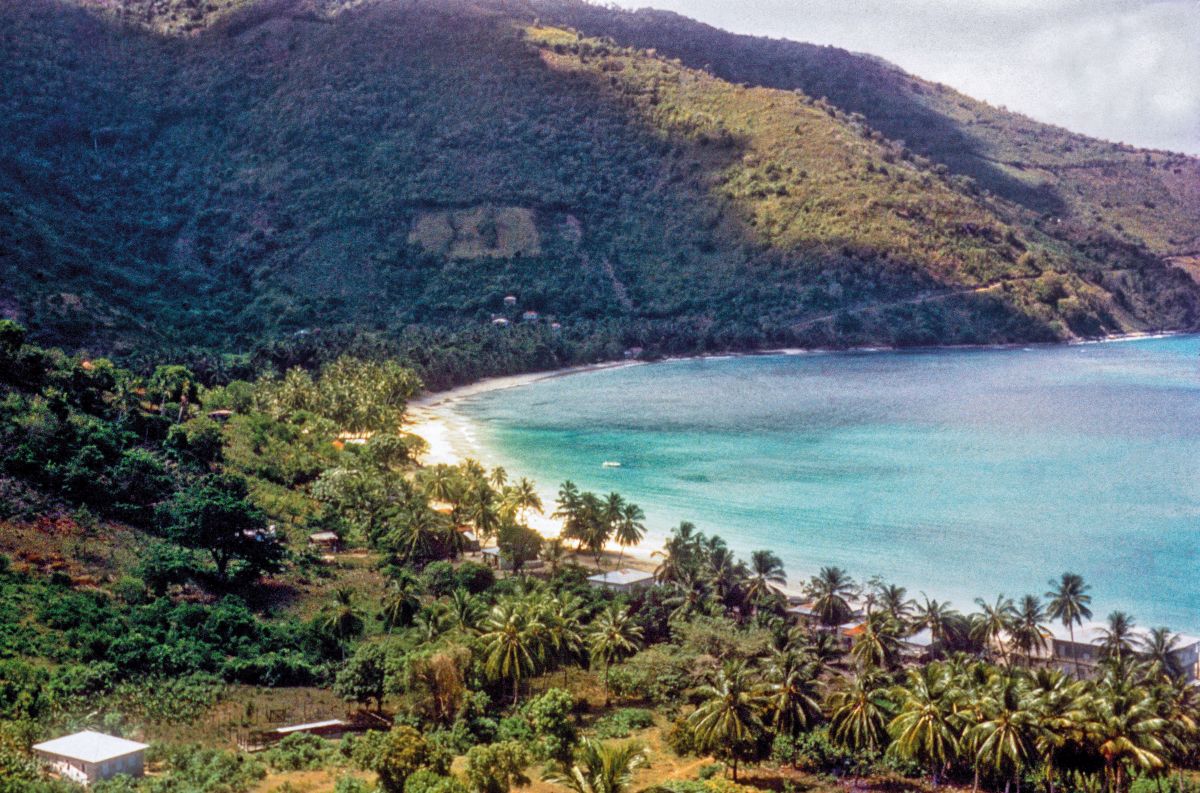
At each full moon, it was traditional for one of the charter boat crew to host a concert using gramophone records at Nelson’s Dockyard, amongst the ruins of the old Copper and Lumber Store. On the particular occasion when the Tattersalls attended, the concert finished with Tchaikovsky’s 1812 Overture. Together with the final crescendo of the guns echoing out over the harbour, it was a magical night for all, and it was difficult, in such a historical setting, to believe that they were not still in the late 18th century.
The family spent a week moored in English Harbour, attending to the teething issues resulting from the sail from Saint Lucia, before they set off for their final destination of Tortola, stopping on the way at Nevis, Saint Kitts, Saint Barths, Sint Maarten,
and Anguilla.
A magical moment
Something very special happened when the family reached Anguilla and anchored off Sandy Ground, with its famous salt ponds behind the village. They hopped into their dinghy and rowed towards the beach. Before they got there, the three boys jumped out and swam
to the shore.
Three Anguillan boys, around the same age as the Tattersall boys, appeared at the head of the beach, looking a little bit menacing, rather like warriors. They then charged down straight towards the Tattersall kids. Jill understandably felt a little bit nervous, but she and Robin held back to see what might happen.
The young Anguillan kids ran past the Tattersalls and dived into the water. They then ran back out of the water, and up to the dry, pure white sand, in which they rolled over and over, and then stood up completely white from head to toe with big grins on their faces.
The six children immediately bonded and played together for the three days the family spent in Anguilla, and had the most wonderful time. Robin thought to himself“If only members of the UN could have witnessed how young children cope with the issue of race.”
Later, Robin consulted with an elderly former Anguillan sea captain whom he had met on the old dock at Sandy Ground. He explained he was leaving for Tortola the next day and would like his expert advice.
The old salt puffed on his pipe and said,“Well, sir, you leaves in the evening time, and you sail towards the setting sun, and when the sun goes down you keep going straight, and when the sun comes up in the morning, it’s left for Saint Croix, straight on for Saint Thomas, and right for Tortola.”
Arriving in Tortola
The difficult part was “keep going straight” after the sun went down, because almost immediately it was dark. The compass light had failed. However, with eldest son James sharing the helm with Robin throughout the night, they made it to the BVI without further mishap.
Summer’s Cloud entered through the Round Rock Passage in the early hours of October 10, 1965. Robin initially mistook East End for Road Town, but after correcting that, the family anchored off the government dock at around 10 a.m.
Robin rowed ashore and was met by a portly young Tortolan by the name of Ralph O’Neal, later to become the BVI’s first premier, who at that time had recently returned from studying at Oxford, and was the personal assistant to the administrator.
When he met Robin, he asked “Where is your boat?” When Robin pointed to the diminutive sloop offshore, he replied“Where? I can’t see it!” He was somewhat taken aback when Robin said, “Look down my finger.” Mr. O’Neal replied “That tiny little boat?! We were told that our new surgeon was a millionaire playboy with a luxury yacht who happened also to be a doctor and was gracious enough to spend two years with us.” “He was looking for a yacht more the size of Aristotle Onassis’s yacht Christina!” Robin says.
Reporting for duty and settling in
Later that day, Robin went to the home of the current superintendent of medical services, at that time one of the only two government physicians. He welcomed Robin and said, with his Irish brogue accent, “There isn’t much work to do at all, so just take two weeks to get yourself acclimatised.” At which point his telephone, one of the only 30 on the island, rang. He said, “I’ll send the new surgeon down right away!” From that moment on Robin never stopped working!
Robin had been appointed to be the BVI’s first-ever surgeon, and his primary responsibility was for all the patients in the hospital. On a small Caribbean island at that time, doing everything really meant everything, from routine checkups to major cancer surgery, treating spear gun wounds and other unpleasant injuries, to ushering in an entire generation of babies. Robin’s list of deliveries soon read like a BVI“Who’s Who.” Many infants he delivered went on to make their indelible mark on the landscape.
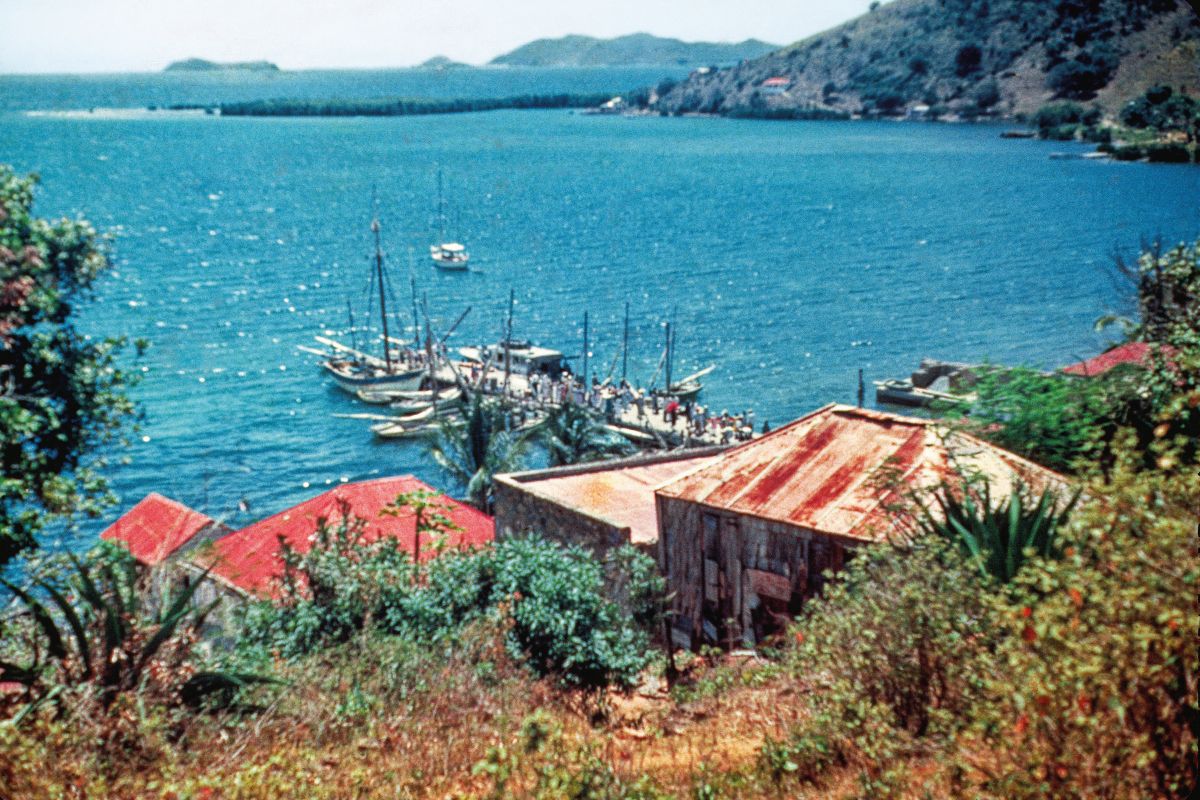
A doctor’s carriage, Tortola style
Robin also had to do general clinics around the islands, in addition to dealing with patients in the hospital. He held regular clinics in East End, Virgin Gorda, Anegada, and Jost Van Dyke.
In addition to his $3,000-per-year salary, Robin’s archaic contract also included a $100-per-year horse allowance for visiting his patients.
“But I was not much good on a horse,” Robin admits. So he convinced the government to convert it to a boat allowance, after he realised 80 percent of the population lived within a couple of hundred yards of the ocean.
The government motor launch,Saint Ursula, was officially on call for travel around the islands, but when Robin arrived, it had been out of action for some time. Initially he had to visit Virgin Gorda and Anegada using his own boat. This was a very slow process under sail.
Robin soon acquired the latest high-speed 20-foot Bertram Moppy, which allowed him to reach Anegada in less than 40 minutes. This gave him the nickname“The Flying Doctor,” because sometimes in rough seas it would leap from one wave to the next!
A day in the life of the good Dr. Tattersall
A total population of fewer than 200 Anegadans lived in The Settlement, which at that time was the only inhabited area of the island. The shoreline at that end of the island was surrounded by up to a mile of reef through which Robin had to weave his way, and he still had to anchor quite a distance offshore, row in by dinghy, then finally take off his shoes and wade to the shore.
Many of the young children had dental problems, and they expected Robin to remove their bad teeth. Not being a dentist, Robin initially refused, but they persisted and eventually, he relented and arranged to borrow some dental tools from Dr. Hurt, the ancient Tortola dentist who had a little plaque over his practice door saying, “The pain is in the name!”
The next day, when Robin returned to Anegada, as he waded ashore, a small child greeted him, saying “Did you bring the instrument de toot?” and when Robin replied “yes,” she ran off at high speed.
When he arrived at the Old Clinic building, many children were lined up with big grins on their faces. Robin wasn’t much of a dentist, but he did know a thing or two about local anaesthesia, so was able to remove the offending teeth with little or no discomfort to the kids.
Later, when he returned to the dock, there was one five-year old girl clinging to his hand with tears streaming down her face. He said, “I’m sorry. Did I hurt you?” To which she replied “No! You didn’t pull me toot.”
She was crying because she was the only child in Anegada who didn’t need a tooth pulled that day!
A command performance for a young doctor
On February 23, 1966, only four months after Robin arrived in the BVI, Queen Elizabeth II and Prince Philip were to appear over the horizon on the Royal Yacht Britannia, the first-ever visit to the BVI by a reigning monarch. They would land at Sopers Hole, West End and then drive in a motorcade for a parade on the waterfront in Road Town. By then, authorities predicted that the Queen might be rather hot and appreciate the opportunity to cool down; however, Tortola was short on air conditioning. The onlyunit on the island was in the operating theatre at the hospital. The plan was that Robin would keep her in there for long enough to cool off.
In preparation, Robin and his assistants spent every spare minute getting the unit ready and so didn’t do any surgery for weeks. The hospital and most of the town was repainted. They got rid of all the latrines that used to hang over the water at the edge of the shore as part of the clean-up.
The night before the Queen’s arrival, at a last-minute check at the theatre, Robin put duct tape around the door to make sure nothing was disturbed. That same evening, the population relaxed, and there was much partying and drinking.
Sadly, late at night an inebriated old man had been knocked off his donkey by one of the few motor cars of the time, and received multiple injuries, which in the early hours of the morning had required Robin to remove the duct tape and operate
on him.
After finishing, he scarcely had time to go home to clean and dress up for the arrival of Her Majesty. With Summer’s Cloud properly dressed overall, anchored off the hospital dock, the Queen’s visit was a great success. She was as gracious and charming as ever and very interested in all that Robin and his team had been doing.
Robin jovially recalls that for five years as a medical student and junior doctor at the old Saint Georges Hospital at Hyde Park Corner in London, which had overlooked the gardens of Buckingham Palace, he had never actually seen the Queen — only to have arrived in the BVI just four months earlier only to spend time talking to her for several minutes face to face in his operating theatre.
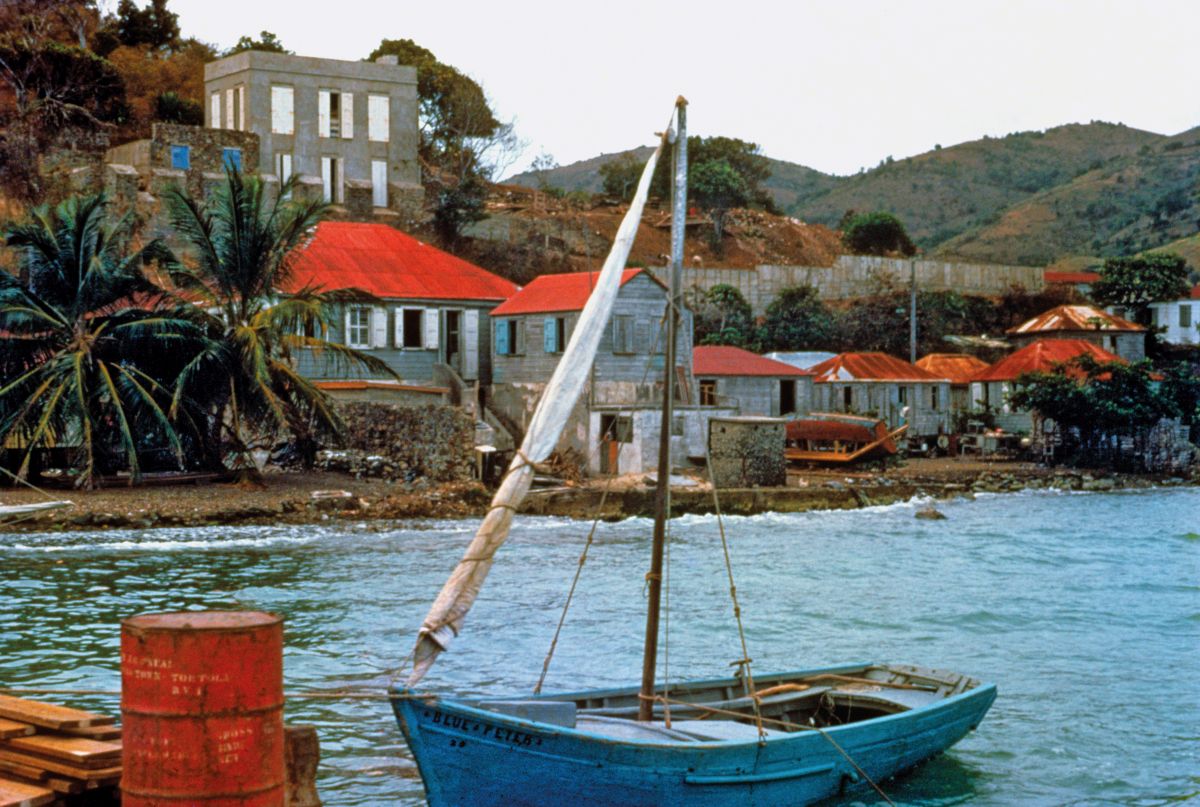
From GP to eye surgeon
The people of the BVI were beginning to believe their doctor could do anything. Shortly before the end of Robin’s first two-year tour, Charles Henley, one of the patriarchs of Cane Garden Bay, consulted Robin concerning his cataracts. He had been blind in one eye for 12 years and in the second eye for the last two. He had never left Tortola and had no intention of doing so.
He said, “Doc, I’d like you to fix my eyes.”
Robin replied, “Well, I’m not an eye surgeon; you would have to go off the island.”
The old man responded, “I’m 85. If you can’t do anything about it, then I’ll just stay blind. But I know that you’re about to go back to England for your leave, so I’d like you to learn how to do it, and then when you return, I’ll be your first patient.”
So Robin went to his old teaching hospital in London and watched some of their top surgeons do cataract surgeries, which in those days, were nothing like the modern version that now only takes 15 minutes. Back then, it involved opening up the whole eye and removing the offending cataract. The procedure required a few special instruments, which a BVI benefactor had kindly donated.
Mr. Henley was waiting for Robin when he returned to Tortola. He came to the hospital and said, “Well, can you do it?” “I’ve watched many, so I know what to do, and I have all the right instruments, but I haven’t actually done one myself,” replied Robin. The old man insisted, and then said, “Let’s start with the one I’ve been blind in for 12 years, so that will be your practice eye, and then by the time you do the second one, you’ll be perfect!”
As it transpired, the second operation was not necessary, because when the bandages came off the day after the first procedure, Mr Henley could see! Good news travelled fast. The next time Robin strolled through his waiting room at the hospital it was full of blind people. He decided he would only operate on those who were unable to go off island, and after a short while, when the new high-tech methods and specialist ophthalmologists became available, Robin gave up the practice.
Bareboat chartering
In1967, Robin was asked by an American visitor if he could rent Summer’s Cloud for a week. The visitor offered to pay him $350. This was a no-brainer, as at that time Robin’s salary was only $3,000 per year. Robin remembers, “He took her away and brought her back in better condition. He fixed all the things I didn’t have time to do! That’s when I called up my brother Ralph in England and said, ‘Maybe we should start a charter company.’” This was the beginning of bareboating in the BVI. They named the company Virgin Voyages and started with three 28-foot sloops from England.
Sadly, it was underfunded, and after two years, the company was failing and Ralph and his family returned to England. The company’s last caretaker was Tony Snell, who was an ex-Spitfire pilot and had a very interesting World War II career. After Virgin Voyages finally folded, Tony created The Last Resort on Little Jost Van Dyke, later moving it to Bellamy Cay in Trellis Bay, where it became well known to sailors the world over. During this time, Robin met Charlie Cary on the dock. Charlie asked him: “What do you think about this bareboat chartering?” Robin replied, “It’s for the birds. We have tried, but it will never work, because people can’t get here and there are scarcely any supplies or facilities when they do, so we’re giving up.” Charlie went on to say, “Well, I’m about to retire and I love to sail, so I think I might give it a go.” Robin said, “Good luck!”
The rest is history, because the following season, Charlie brought in five or six Pearson 35s and started The Moorings, which went on to become the premier chartering company in the world.
Robin’s story is such a special one that we have extended it into a series of three parts. For the final part, see our next issue.
Historical photographs (all except of Queen Elizabeth) kindly supplied by Penny Haycraft. Full collection of photographs available for purchase at Nutmeg & Co. or online at thegallerybvi.com.
